Ann Arbor, Michigan, Hgh State Clinic, Hgh Injections, Hrt Doctors
Ann Arbor, Michigan Blood Testing Facilities
 Represents a LabCorp blood testing facility
Represents a LabCorp blood testing facility Represents a Quest Diagnostics blood testing facility
Represents a Quest Diagnostics blood testing facility
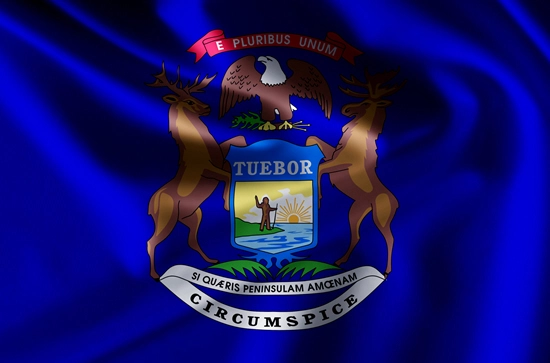
Nearby Labcorp Blood Testing facilities:
- Labcorp Center Distance: 23 m, 20276 Middlebelt Ste 7, Livonia, Wayne County, MI, 48152
- Labcorp Center Distance: 25 m, 28595 Orchard Lake Rd Ste 103, Farmington Hills, Oakland County, MI, 48334
- Labcorp Center Distance: 27 m, 5250 Auto Club Dr Ste 310A, Dearborn, Wayne County, MI, 48126
- Labcorp Center Distance: 34 m, 2191 S Blvd, Auburn Hills, Oakland County, MI, 48326
- Labcorp Center Distance: 40 m, 1701 South Boulevard E Ste 107, Rochester Hills, Oakland County, MI, 48307
- Labcorp Center Distance: 46 m, 1565 S Byrne Rd Ste 105, Toledo, Lucas County, OH, 43614
- Labcorp Center Distance: 76 m, 3250 Intertech Dr Ste C, Angola, Steuben County, IN, 46703
- Labcorp Center Distance: 90 m, 2110 16Th Street, Bay City, Bay County, MI, 48708
- Labcorp Center Distance: 93 m, 272 Benedict Ave, Norwalk, Huron County, OH, 44857
- Labcorp Center Distance: 99 m, 2269 Cooper Foster Park Rd F, Amherst, Lorain County, OH, 44001
Nearby Quest Blood Testing facilities:
- Quest Center Distance: 15 m, 2050 N Haggerty Rd, Canton, Wayne County, MI, 48187-3796
- Quest Center Distance: 20 m, 11583 Farmington Rd, Livonia, Wayne County, MI, 48150-5729
- Quest Center Distance: 23 m, 25070 Michigan Ave, Dearborn, Wayne County, MI, 48124-1740
- Quest Center Distance: 29 m, 14720 King Rd, Riverview, Wayne County, MI, 48193-7973
- Quest Center Distance: 30 m, 1046 N Monroe St, Monroe, Monroe County, MI, 48162-2936
- Quest Center Distance: 31 m, 6620 Highland Rd, Waterford, Oakland County, MI, 48327-1682
- Quest Center Distance: 32 m, 511 Pierce St, Birmingham, Oakland County, MI, 48009-1790
- Quest Center Distance: 33 m, 43494 Woodward Ave, Bloomfield Hills, Oakland County, MI, 48302-5052
- Quest Center Distance: 34 m, 555 W 14 Mile Rd, Clawson, Oakland County, MI, 48017-3100
- Quest Center Distance: 35 m, 425 N Fenway Dr, Fenton, Genesee County, MI, 48430-3810
- Quest Center Distance: 39 m, 38815 Dequindre Rd, Troy, Oakland County, MI, 48083-5769
- Quest Center Distance: 40 m, 135 Barclay Cir, Rochester Hills, Oakland County, MI, 48307-4599
- Quest Center Distance: 41 m, 1424 S Lapeer Rd, Lake Orion, Oakland County, MI, 48360-1437
- Quest Center Distance: 45 m, 42500 Hayes Rd, Clinton Township, Macomb County, MI, 48038-6768
- Quest Center Distance: 49 m, 1397 S Linden Rd, Flint, Genesee County, MI, 48532-4194
- Quest Center Distance: 50 m, 5080 Villa Linde Pkwy, Flint, Genesee County, MI, 48532-3423
- Quest Center Distance: 51 m, 4067 East Court St, Burton, Genesee County, MI, 48509-2509
- Quest Center Distance: 52 m, 1097 S State Rd, Davison, Genesee County, MI, 48423-1904
- Quest Center Distance: 56 m, 944 Baldwin Rd, Lapeer, Lapeer County, MI, 48446-3089
- Quest Center Distance: 57 m, 11515 N Saginaw St, Mount Morris, Genesee County, MI, 48458-2049
- Quest Center Distance: 69 m, 201 E. High St, Bryan, Williams County, OH, 43506-0000
- Quest Center Distance: 74 m, 6185 Dixie Hwy, Bridgeport, Saginaw County, MI, 48722-9618
- Quest Center Distance: 79 m, 2500 West Strub Rd, Sandusky, Erie County, OH, 44870-5366
- Quest Center Distance: 80 m, 2062 N Center Rd, Saginaw, Saginaw County, MI, 48603-3716
- Quest Center Distance: 83 m, 4705 Towne Centre Rd, Saginaw, Saginaw County, MI, 48604-2818
- Quest Center Distance: 90 m, 5555 Gull Rd, Kalamazoo, Kalamazoo County, MI, 49048-7640
- Quest Center Distance: 91 m, 200 S Wenona St, Bay City, Bay County, MI, 48706-8820
- Quest Center Distance: 97 m, 555 W Wackerly St, Midland, Midland County, MI, 48640-4713
Michigan Hormone Replacement Therapy Services
Are you interested in Hormone Restoration but don't know where to turn? The Conscious Evolution Institute is a fully licensed and insured medical clinic that specializes in the most effective Hormone Replacement Products available on the market today. Our staff of trained health and wellness clinicians and Anti-Aging Doctors can help you uncover any underlying Hormone Imbalances which may be hindering your overall well-being.
By just filling out the form on our website, or giving our clinic a call, we can arrange for you to meet with our vast and experienced network of affiliate medical physicians that can provide the physical and take the blood sample necessary to provide all of the data for our professionals to make an informed diagnosis. If you qualify for therapy, we can have Quality HRT Treatments shipped directly to your door.
Michigan HGH Replacement Services
Human Growth Hormone is one of the most important hormones when it comes to optimal health. HGH is the primary hormone responsible for cellular metabolism, and it plays a role in the peak function of systems all throughout the body. It helps build muscle mass, burn fat, and it helps sustain various systems, including the immune system and the cardiovascular system. Age-Related HGH Deficiency robs the body of this vital hormone, causing the body to slow down, which encourages premature aging and disrupts the healthy function of the body.
Human Growth Hormone Injection Therapy and Sermorelin Injection Therapy are both valid and effective options when it comes to the war against HGH Deficiency. Sermorelin restores hormone balance by optimizing the brain's own production of Growth Hormone, while HGH Therapy directly substitutes for the body's flagging ability to produce its own supply.
Michigan Low-T Treatments
Our clinic also provides treatment for Age-Related Testosterone Deficiency, also known as Andropause. As men grow older, their bodies start to produce smaller and smaller concentrations of Testosterone. There are a number of variables which can speed up the rate of Testosterone Decline, including poor sleeping habits, obesity, and stress. Testosterone Levels start to drop in the late twenties and early thirties, and continue to decline for the rest of your life.
Low-T is a clinical medical condition that occurs once Testosterone Deficiency starts to have a negative impact on your life. The most noticeable symptoms are sexual dysfunction and lack of sex drive, but other symptoms include hypertension, glucose intolerance, hardening of the arteries, anxiety, and trouble sleeping. Testosterone Deficiency is most effectively treated with Testosterone Hormone Replacement Therapy, which is available in many forms, including Testosterone Injections, Gels, Creams, and Dermal Implants.
Michigan HCG Weight Loss Therapy
HCG stands for Human Chorionic Gonadotropin. You may not have ever heard of this hormone, but it is a highly effective weight loss treatment that has helped tens of thousands of men and women across the country diet successfully for the first time in their lives.
For men and women that simply have not found a diet that works for them, HCG Therapy makes dieting easier than ever. HCG has the unique ability to inhibit cravings and soften the impact of hunger. It also encourages the increased metabolism of bodyfat, which sustains energy even when on a low-calorie diet, and wards off fatigue.
If you think you may be a candidate for Weight Loss with HCG, we can help you get treatment!
Major Cities in Michigan
Detroit
Detroit, Michigan is the largest city in the state of Michigan, as well as the largest metropolitan area by far. Detroit is home to a number of professional sports teams, including the NHL Detroit Redwings, the NBA Detroit Pistons, the NFL Detroit Lions, and the MLB Detroit Tigers.
Detroit has faced a significant economic decline over the past forty years, but is slowly recovering, and the suburban communities outside of Detroit, including Auburn Hills, Grosse Point, and Bloomfield Hills remain strong. Museums in Detroit include the Detroit Science Center, the Detroit Historical Museum, and the Detroit Institute of Arts.
Grand Rapids
Grand Rapids is located in the southwestern region of Michigan, and is the second largest city in the state. Grand Rapids also goes by the nickname, the River City, because of its location on the Grand River. Among the largest employers in Grand Rapids are Meijer, Axios Incorporated, and Spectrum Health.
A number of companies are also based in Grand Rapids, including Spartan Stores, Bissell, and Alticor/Amway. The city is widely recognized for its strong economy, and is frequently listed among the best mid-sized cities to live, work, and invest.
Warren
Warren is the most populous suburb of Detroit, and is the third biggest city in the state of Michigan. Historically, Warren was known as Beebe's Corner, and officially became the city of Warren in 1957.
Warren has a strong economy, based largely around its military and automotive presence. Among the companies that are located in Warren are the GM Cadillac Motor Car Division, Tank Automotive Research, and the GM Technical Center. Warren is also the home of Big Boy restaurants.
Sterling Heights
Sterling Heights is another suburb of Detroit, and is located immediately north of Warren, Michigan. Sterling Heights is the fourth biggest city in Michigan. The area began as an agricultural community, selling crops such as rhubarb to the citizens of Detroit, but beginning in the late fifties and early sixties, it quickly became a large suburban community. Sterling Heights is considered one of the safest mid-sized cities in the country.
Lansing
Lansing is located in central Michigan, and is the capital of the state. Michigan State is located in East Lansing, Michigan. Lansing is unique among United States capitals, because it is the only capital which is not considered the county seat (which is Mason, Michigan).
The largest public employers in the area are Michigan State University and the state itself. The largest private employers are General Motors and Sparrow Health System. Lansing has a number of interesting cultural landmarks, including the Lansing Symphony Orchestra, the Riverwalk Theater, and the Impression 5 Science Center.
All About Ann Arbor, Michigan Geographic Area

Ann Arbor is a city in the US state of Michigan and the county seat of Washtenaw County. The 2010 census places the population at 113,934, making it the sixth largest city in Michigan. The Ann Arbor Metropolitan Statistical Area (MSA) includes all of Washtenaw County, which had a population of 344,791 as of 2010. The city is also part of the larger Detroit ae Ann Arbor ae Flint, MI CSA.
Ann Arbor was founded in 1824, with one theory stating that it is named after the spouses of the city's founders and for the stands of trees in the area. The University of Michigan moved from Detroit to Ann Arbor in 1839, and the city showed steady growth throughout the 19th and 20th centuries, except during the Depression of 1873. During the 1960s and 1970s, the city gained a reputation as a center for liberal politics. Ann Arbor became a focal-point for left-wing activism and served as a hub for the civil-rights movement and anti-Vietnam War movement, as well as the student movement.
Ann Arbor is home to the University of Michigan, a world renowned institution of higher education. The university shapes Ann Arbor's economy significantly as it employs about 30,000 workers, including about 12,000 in the medical center. The city's economy is also centered on high technology, with several companies drawn to the area by the university's research and development money, and by its graduates. In 2008, Money magazine ranked Ann Arbor, 27th out of the top 100 best places to live in America. And in the year 2010, Forbes listed Ann Arbor as one of the most liveable cities in the United States of America.
Ann Arbor was founded in 1824 by land speculators John Allen and Elisha Rumsey. On 25 May 1824, the town plat was registered with Wayne County as "Annsarbour"; this represents the earliest known use of the town's name. There are various accounts concerning the origin of the settlement's name; one states that Allen and Rumsey decided to name it for their wives, both named Ann, and for the stands of burr oak in the 640 acres (260 ha) of land they purchased for $800 from the federal government at $1.25 per acre. The local Ojibwa named the settlement kaw-goosh-kaw-nick, after the sound of Allen's sawmill.
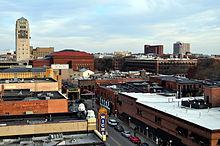
Ann Arbor became the seat of Washtenaw County in 1827, and was incorporated as a village in 1833. The Ann Arbor Land Company, a group of speculators, set aside 40 acres (16 ha) of undeveloped land and offered it to the state of Michigan as the site of the state capital, but lost the bid to Lansing. In 1837, the property was accepted instead as the site of the University of Michigan, which moved from Detroit.
Since the university's establishment in the city in 1837, the histories of the University of Michigan and Ann Arbor have been closely linked. The town became a regional transportation hub in 1839 with the arrival of the Michigan Central Railroad, and a north aesouth railway connecting Ann Arbor to Toledo and other markets to the south was established in 1878. Throughout 1840s and the 1850s settlers continued to come to Ann Arbor. While the earlier settlers were primarily of British ancestry, the newer settlers also consisted of Germans, Irish, and African-Americans. In 1851, Ann Arbor was chartered as a city, though the city showed a drop in population during the Depression of 1873. It was not until the early 1880s that Ann Arbor again saw robust growth, with new immigrants coming from Greece, Italy, Russia, and Poland. Ann Arbor saw increased growth in manufacturing, particularly in milling. Ann Arbor's Jewish community also grew after the turn of the 20th century, and its first and oldest synagogue, Beth Israel Congregation, was established in 1916.
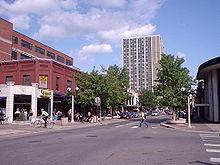
During the 1960s and 1970s, the city gained a reputation as an important center for liberal politics. Ann Arbor also became a locus for left-wing activism and served as a hub for the civil-rights movement and anti-Vietnam War movement, as well as the student movement. The first major meetings of the national left-wing campus group Students for a Democratic Society took place in Ann Arbor in 1960; in 1965, the city was home to the first U.S. teach-in against the Vietnam War. During the ensuing 15 years, many countercultural and New Left enterprises sprang up and developed large constituencies within the city. These influences washed into municipal politics during the early and mid-1970s when three members of the Human Rights Party (HRP) won city council seats on the strength of the student vote. During their time on the council, HRP representatives fought for measures including pioneering antidiscrimination ordinances, measures decriminalizing marijuana possession, and a rent-control ordinance; many of these remain in effect in modified form. Alongside these liberal and left-wing efforts, a small group of conservative institutions were born in Ann Arbor. These include Word of God (established in 1967), a charismatic inter-denominational movement; and the Thomas More Law Center (established in 1999), a religious-conservative advocacy group.
Following a 1956 vote the city of East Ann Arbor merged with Ann Arbor to encompass the eastern sections of the city.
In the past several decades, Ann Arbor has grappled with the effects of sharply rising land values, gentrification, and urban sprawl stretching into outlying countryside. On 4 November 2003, voters approved a greenbelt plan under which the city government bought development rights to pieces of land adjacent to Ann Arbor to preserve them from sprawling development. Since then, a vociferous local debate has hinged on how and whether to accommodate and guide development within city limits. Ann Arbor consistently ranks in the "top places to live" lists published by various mainstream media outlets every year. In 2008, it was ranked by CNNMoney.com 27th out of 100 "America's best small cities."
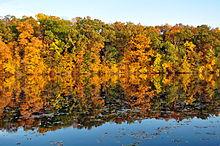
According to the United States Census Bureau, the city has an area of 27.7 square miles (72 km2); 27.0 square miles (70 km2) is land and 0.7 square miles (1.8 km2) or 2.43% is water, much of which is part of the Huron River. Ann Arbor is about 35 miles (56 km) west of Detroit. Ann Arbor Charter Township adjoins the city's north and east sides. Ann Arbor is situated on the Huron River in a productive agricultural and fruit-growing region. The landscape of Ann Arbor consists of hills and valleys, with the terrain becoming steeper near the Huron River. The elevation ranges from about 750 feet (230 m) along the Huron River to over 1,000 feet (300 m) on the city's west side, near I-94. Generally, the west-central and northwestern parts of the city and UM's North Campus are the highest parts of the city; the lowest parts are along the Huron River and in the southeast. Ann Arbor Municipal Airport, which is south of the city at 42 °13.38 a²N 83 °44.74 a²W / 42.223 °N 83.74567 °W / 42.223; -83.74567, has an elevation of 839 feet (256 m).
Ann Arbor's "Tree Town" nickname stems from the dense forestation of its parks and residential areas. The city contains more than 50,000 trees along its streets and an equal number in parks. In recent years, the emerald ash borer has destroyed many of the city's approximately 10,500 ash trees. The city contains 157 municipal parks ranging from small neighborhood green spots to large recreation areas. Several large city parks and a university park border sections of the Huron River. Fuller Recreation Area, near the University Hospital complex, contains sports fields, pedestrian and bike paths, and swimming pools. The Nichols Arboretum, owned by the University of Michigan, is a 123-acre (50 ha) arboretum that contains hundreds of plant and tree species. It is on the city's east side, near the university's Central Campus.
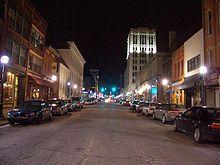
The Kerrytown Shops, Main Street Business District, the State Street Business District, and the South University Business District are commercial areas in downtown Ann Arbor. Three commercial areas south of downtown include the areas near I-94 and Ann Arbor-Saline Road, Briarwood Mall, and the South Industrial area. Other commercial areas include the Arborland/Washtenaw Avenue and Packard Road merchants on the east side, the Plymouth Road area in the northeast, and the Westgate/West Stadium areas on the west side. Downtown contains a mix of 19th- and early-20th-century structures and modern-style buildings, as well as a farmers' market in the Kerrytown district. The city's commercial districts are composed mostly of two- to four-story structures, although downtown and the area near Briarwood Mall contain a small number of high-rise buildings.
Ann Arbor's residential neighborhoods contain architectural styles ranging from classic 19th-century and early-20th-century designs to ranch-style houses. Contemporary-style houses are farther from the downtown district. Surrounding the University of Michigan campus are houses and apartment complexes occupied primarily by student renters. Tower Plaza, a 26-story condominium building located between the University of Michigan campus and downtown, is the tallest building in Ann Arbor. The 19th century buildings and streetscape of the Old West Side neighborhood have been preserved virtually intact; in 1972, the district was listed on the National Register of Historic Places, and it is further protected by city ordinances and a nonprofit preservation group.

Ann Arbor has a typically Midwestern humid continental climate (Koppen Dfa), which is influenced by the Great Lakes. There are four distinct seasons: winters are cold with moderate to heavy snowfall, while summers are very warm and humid; in between, spring and autumn are short but mild. The area experiences lake effect weather, primarily in the form of increased cloudiness during late fall and early winter. The monthly daily average temperature in July is 72.6 °F (22.6 °C), while the same figure for January is 23.4 °F ( na4.8 °C); the year averages out at 49.0 °F (9.4 °C). Summer temperatures can exceed 90 °F (32 °C), doing so on 10 days, and winter temperatures can drop well below 0 °F ( na18 °C), doing so on 6 nights. Average monthly precipitation ranges from 2 to 4 inches (5 to 10 cm), with the heaviest occurring during the summer months. Snowfall, which normally occurs from November to April, averages 52 inches (132 cm) per season, and the median amount is slightly less, at 45 inches (114 cm). The lowest recorded temperature was na23 °F ( na31 °C) on 11 February 1885, and the highest recorded temperature was 105 °F (41 °C) on 24 July 1934.
As of the 2010 U.S. Census, there were 113,394 people, 45,634 households, and 21,704 families residing in the city. The population density was 4,270.33 people per square mile (2653.47/km ²). There were 49,982 housing units at an average density of 1,748.0 per square mile (675.0/km ²), making it less densely populated than inner-ring Detroit suburbs like Oak Park and Ferndale (and than Detroit proper), but more densely populated than outer-ring suburbs like Livonia or Troy. The racial makeup of the city was 73.0% White (70.4% non-Hispanic White), 7.7% Black or African American, 0.3% Native American, 14.4% Asian, 0.0% Pacific Islander, 1.0% from other races, and 3.6% from two or more races. Hispanic or Latino of any race were 4.1% of the population.
In 2010 there was a total of 45,166 households, with an average of 2.51 persons per household.
As of 2000 the ancestry reports collected by the US census showed that in Ann Arbor 14.9% were of German, 8.5% English and 7.9% Irish ancestry according to Census 2000. 79.2% spoke only English at home, while 3.2% spoke Chinese or Mandarin, 3.1% Spanish, 1.9% Korean, 1.2% German, 1.1% Japanese and 1.0% French. Because of the pull of the university, the city has one of the highest foreign-born populations in the state, at 17.4%.
In 2000 Out of the 45,693 households, 23.0% had children under the age of 18 living with them, 37.8% were married couples living together, 7.5% had a female householder with no husband present, and 52.5% were nonfamilies. 35.5% of households were made up of individuals and 6.6% had someone living alone who was 65 years of age or older. The average household size was 2.22 and the average family size was 2.90. The age distribution was 16.8% under 18, 26.8% from 18 to 24, 31.2% from 25 to 44, 17.3% from 45 to 64, and 7.9% were 65 or older. The median age was 28 years. For every 100 females there were 97.7 males; while for every 100 females age 18 and over, there were 96.4 males.
The median income for a household in the city was $46,299, and the median income for a family was $71,293 (these figures had risen to $51,232 and $82,293 respectively as of a 2007 estimate). Males had a median income of $48,880 versus $36,561 for females. The per capita income for the city was $26,419. About 4.6% of families and 16.6% of the population were below the poverty line, including 7.3% of those under age 18 and 5.1% of those age 65 or over.
Ann Arbor's crime rate was below the national average in 2000. The violent crime rate was further below the national average than the property crime rate; the two rates were 48% and 11% lower than the U.S. average, respectively.
The University of Michigan shapes Ann Arbor's economy significantly. It employs about 30,000 workers, including about 12,000 in the medical center. Other employers are drawn to the area by the university's research and development money, and by its graduates. High tech, health services and biotechnology are other major components of the city's economy; numerous medical offices, laboratories, and associated companies are located in the city. Automobile manufacturers, such as General Motors and Visteon, also employ residents.
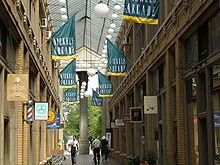
High tech companies have located in the area since the 1930s, when International Radio Corporation introduced the first mass-produced AC/DC radio (the Kadette, in 1931) as well as the first pocket radio (the Kadette Jr., in 1933). The Argus camera company, originally a subsidiary International Radio, manufactured cameras in Ann Arbor from 1936 to the 1960s. Current firms include Arbor Networks (provider of Internet traffic engineering and security systems), Arbortext (provider of XML-based publishing software), JSTOR (the digital scholarly journal archive), MediaSpan (provider of software and online services for the media industries), and ProQuest, which includes UMI. Ann Arbor Terminals manufactured a video-display terminal called the Ann Arbor Ambassador during the 1980s. Barracuda Networks, which provides networking, security, and storage products based on network appliances and cloud services, opened an engineering office in Ann Arbor in 2008 on Depot St. and recently announced it will move downtown to occupy the building previously used as the Borders headquarters.
Websites and online media companies in or near the city include All Media Guide, the Weather Underground, and Zattoo. Ann Arbor is the home to Internet2 and the Merit Network, a not-for-profit research and education computer network. Both are located in the South State Commons 2 building on South State Street, which once housed the Michigan Information Technology Center Foundation. The city is also home to the headquarters of Google's AdWords program aethe company's primary revenue stream.
Pfizer, once the city's second largest employer, operated a large pharmaceutical research facility on the northeast side of Ann Arbor. On 22 January 2007, Pfizer announced it would close operations in Ann Arbor by the end of 2008. The facility was previously operated by Warner-Lambert and, before that, Parke-Davis. In December 2008, the University of Michigan Board of Regents approved the purchase of the facilities, and the university anticipates hiring 2,000 researchers and staff during the next 10 years. The city is the home of other research and engineering centers, including those of Lotus Engineering, General Dynamics and the National Oceanic and Atmospheric Administration (NOAA). Other research centers sited in the city are the United States Environmental Protection Agency's National Vehicle and Fuel Emissions Laboratory and the Toyota Technical Center. The city is also home to National Sanitation Foundation International, AKA: NSF International, the nonprofit non-governmental organization that develops generally accepted standards for a variety of public health related industries and subject areas.
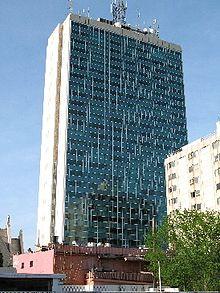
Borders Books, started in Ann Arbor, was opened by brothers Tom and Louis Borders in 1971 with a stock of used books. The Borders chain was based in the city, as was its flagship store until it closed in September 2011. Domino's Pizza's headquarters is near Ann Arbor on Domino's Farms, a 271 acres (110 ha) Frank Lloyd Wright-inspired complex just northeast of the city. Another Ann Arbor-based company is Zingerman's Delicatessen, which serves sandwiches, and has developed businesses under a variety of brand names. Zingerman's has grown into a family of companies which offers a variety of products (bake shop, mail order, creamery, coffee) and services (business education). Flint Ink Corp., another Ann Arbor-based company, was the world's largest privately held ink manufacturer until it was acquired by Stuttgart-based XSYS Print Solutions in October 2005. AvFuel, a nationwide supplier of aviation fuels and services, is also headquartered in Ann Arbor.
Many cooperative enterprises were founded in the city; among those that remain are the People's Food Co-op and the Inter-Cooperative Council at the University of Michigan, a student housing cooperative founded in 1937. The North American Students of Cooperation (NASCO) is an international association of cooperatives headquartered in Ann Arbor. There are also three cohousing communities aeSunward, Great Oak, and Touchstone aelocated immediately to the west of the city limits.
Many Ann Arbor cultural attractions and events are sponsored by the University of Michigan. Several performing arts groups and facilities are on the university's campus, as are museums dedicated to art, archaeology, and natural history and sciences. Founded in 1879, the University Musical Society is an independent performing arts organization that presents over 60 events each year, bringing international artists in music, dance, and theater. Regional and local performing arts groups not associated with the university include the Ann Arbor Civic Theatre, the Arbor Opera Theater, the Ann Arbor Symphony Orchestra, the Ann Arbor Ballet Theater, the Ann Arbor Civic Ballet (established in 1954 as Michigan's first chartered ballet company), The Ark, and Performance Network Theatre, which operates a downtown theater and frequently offers new or nontraditional plays. Another unique piece of artistic expression in Ann Arbor is the fairy doors. These small portals are examples of installation art and can be found throughout the downtown area.
The Ann Arbor Hands-On Museum, located in a renovated and expanded historic downtown fire station, contains more than 250 interactive exhibits featuring science and technology. Multiple art galleries exist in the city, notably in the downtown area and around the University of Michigan campus. Aside from a large restaurant scene in the Main Street, South State Street, and South University Avenue areas, Ann Arbor ranks first among U.S. cities in the number of booksellers and books sold per capita. The Ann Arbor District Library maintains four branch outlets in addition to its main downtown building. The city is also home to the Gerald R. Ford Presidential Library.
Several annual events aemany of them centered on performing and visual arts aedraw visitors to Ann Arbor. One such event is the Ann Arbor Art Fairs, a set of four concurrent juried fairs held on downtown streets, which began in 1960. Scheduled on Wednesday through Saturday in the third week of July, the fairs draw upward of half a million visitors. Another is the Ann Arbor Film Festival, held during the third week of March, which receives more than 2,500 submissions annually from more than 40 countries and serves as one of a handful of Academy Award aequalifying festivals in the United States.
Ann Arbor has a long history of openness to marijuana, given Ann Arbor's decriminalization of cannabis, the large number of medical marijuana dispensaries in the city (one dispensary, called People's Co-op, was directly across the street from Michigan Stadium until zoning forced it to move one mile to the west), the large number of pro-marijuana residents, and given the annual Hash Bash: an event that is held on the first Saturday of April, ostensibly in support of the reform of marijuana laws. Until (at least) the successful passage of Michigan's medical marijuana law, the event had arguably strayed from its initial intent, although for years, a number of attendees have received serious legal responses due to marijuana use on University of Michigan property, which does not fall under the City's progressive and compassionate ticketing program.
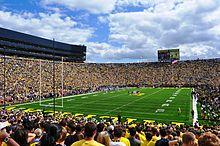
Ann Arbor has a major scene for college sports, notably at the University of Michigan, a member of the Big Ten Conference. Several well-known college sports facilities exist in the city, including Michigan Stadium, the largest American football stadium in the world with a 109,901 seating capacity. The stadium is colloquially known as "The Big House." Crisler Arena and Yost Ice Arena play host to the school's basketball and ice hockey teams, respectively. Concordia University, a member of the NAIA, also fields sports teams.
For a period during the latter 1960s, the Ann Arbor vicinity acquired a greater recognition globally among certain fans of rock music, as the area included a number of popular groups which originated in Ann Arbor, were frequent visitors of Ann Arbor, or settled in the city or surrounding area. Among these were Detroit transplants MC5, as well as The Stooges, SRC, The Up, The Rationals and others. This trend continued with later groups such as The Cult Heroes, although the residual influences of the 1960s trendsetters are still evident in the city today.
A person from Ann Arbor is called an Ann Arborite, and many long-time residents call themselves townies. The city itself is often called A ² ("A-squared") or A2 ("A two"), "The Deuce", "Ace Deuce" and, less commonly, Tree Town. With tongue-in-cheek reference to the city's liberal political leanings, some occasionally refer to Ann Arbor as The People's Republic of Ann Arbor or 25 square miles surrounded by reality, the latter phrase being adapted from Wisconsin Governor Lee Dreyfus's description of Madison, Wisconsin. In A Prairie Home Companion broadcast from Ann Arbor, Garrison Keillor described Ann Arbor as "a city where people discuss socialism, but only in the fanciest restaurants." Ann Arbor sometimes appears on citation indexes as an author, instead of a location, often with the academic degree MI, a misunderstanding of the abbreviation for Michigan.
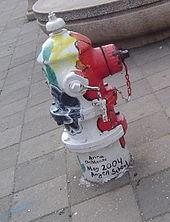
The Ann Arbor News, owned by the Michigan-based Booth Newspapers chain, was the major daily newspaper serving Ann Arbor and the rest of Washtenaw County. The newspaper ended its 174-year print run in 2009, due to economic difficulties. It has been replaced by AnnArbor.com, which has a semi-weekly print operation in addition to its website. Another Ann Arbor-based publication that has ceased production was the Ann Arbor Paper, a free monthly. Ann Arbor has been said to be the first significant city to loses its only daily paper.
Current publications in the city include the Ann Arbor Journal (A2 Journal), a weekly community newspaper; Ann Arbor Observer, a free monthly local magazine; and Current, a free entertainment-focused alt-weekly. The Ann Arbor Business Review covers local business in the area. The Ann Arbor Chronicle is an online newspaper that covers local news, including meetings of the library board, county commission, and DDA. Car and Driver magazine and Automobile Magazine are also based in Ann Arbor. The University of Michigan is served by many student publications, including the independent Michigan Daily student newspaper, which reports on local, state, and regional issues in addition to campus news.
Four major AM radio stations based in or near Ann Arbor are WAAM 1600, a conservative news and talk station; WLBY 1290, a business news and talk station; WDEO 990, Catholic radio; and WTKA 1050, which is primarily a sports station. The city's FM stations include NPR affiliate WUOM 91.7; country station WWWW 102.9 and adult-alternative station WQKL 107.1. Freeform station WCBN-FM 88.3 is a local community radio/college radio station operated by the students of the University of Michigan featuring noncommercial, eclectic music and public-affairs programming. The city is also served by public and commercial radio broadcasters in Ypsilanti, the Lansing/Jackson area, Detroit, Windsor, and Toledo.
WPXD channel 31, an affiliate of the ION Television network, is licensed to the city. Community Television Network (CTN) is a city-provided cable television channel with production facilities open to city residents and nonprofit organizations. Detroit and Toledo-area radio and television stations also serve Ann Arbor, and stations from Lansing and Windsor, Ontario, can be heard in parts of the area.

Ann Arbor has a council-manager form of government. The City Council has 11 voting members: the mayor and 10 city council members. The mayor and city council members serve two-year terms: the mayor is elected every even-numbered year, while half of the city council members up for election annually (five in even-numbered and five in odd-numbered years). Two council members are elected from each of the city's five wards. The mayor is elected citywide. The mayor is the presiding officer of the City Council and has the power to appoint all Council committee members as well as board and commission members, with the approval of the City Council. The current mayor of Ann Arbor is John Hieftje, a Democrat who was first elected as mayor in 2000. Day-to-day city operations are managed by a city administrator chosen by the city council.[100]
In 1960, Ann Arbor voters approved a $2.3 million bond issue to build the current city hall. The City Hall opened in 1963. In 1995, the building was renamed the Guy C. Larcom, Jr. Municipal Building in honor of Guy C. Larcom, Jr., a longtime city administrator who championed the building's construction.[101]
Ann Arbor is part of Michigan's 15th congressional district, represented in Congress by Representative John Dingell, a Democrat. On the state level, the city is part of the 18th district in the Michigan Senate, represented by Democrat Rebekah Warren, and is split between the 53rd district (most of the city, represented by Democrat Jeff Irwin) and the 52nd district (northeastern Ann Arbor and Ann Arbor Township, represented by Mark Ouimet) in the Michigan House of Representatives.[102]
As the county seat of Washtenaw County, the Washtenaw County Trial Court (22nd Circuit Court) is located in Ann Arbor at the Washtenaw County Courthouse on Main Street. This court has countywide general jurisdiction and has two divisions: The Civil/Criminal (criminal and civil matters) and the Family Division (which includes Juvenile Court, Friend of the Court, and Probate Court sections). Seven judges serve on the court.[103]
Ann Arbor also has a local state district court (15th District Court), which serves only the City of Ann Arbor. In Michigan, the state district courts are limited jurisdiction courts which handle traffic violations, civil cases with claims under $25,000, landlord-tenant matters, and misdemeanor crimes.[104]
The Ann Arbor Federal Building (attached to a post office) on Liberty Street serves as one of the courthouses for the U.S. District Court for the Eastern District of Michigan and Court of Appeals for the Sixth Circuit.[105][106][107][108][109]
Left-wing politics have been particularly strong in municipal government since the 1960s. Voters approved charter amendments that have lessened the penalties for possession of marijuana (1974),[110] and that aim to protect access to abortion in the city should it ever become illegal in the State of Michigan (1990).[111] In 1974, Kathy Kozachenko's victory in an Ann Arbor city-council race made her the country's first openly homosexual candidate to win public office.[112] In 1975, Ann Arbor became the first U.S. city to use instant-runoff voting for a mayoral race. Adopted through a ballot initiative sponsored by the local Human Rights Party, which feared a splintering of the liberal vote, the process was repealed in 1976 after use in only one election.[113] As of August 2009, Democrats hold the mayorship and all council seats.[114] The left tilt of politics in the city have earned it the nickname "The People's Republic of Ann Arbor".[115]
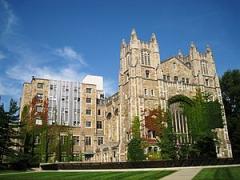
The University of Michigan dominates the city of Ann Arbor, providing the city with its distinct college-town character.[116]
Other local colleges and universities include Concordia University Ann Arbor, a Lutheran liberal-arts institution; a campus of the University of Phoenix; and Cleary University, a private business school. Washtenaw Community College is located in neighboring Ann Arbor Township. In 2000, the Ave Maria School of Law, a Roman Catholic law school established by Domino's Pizza founder Tom Monaghan, opened in northeastern, but the school moved to Ave Maria, Florida in 2009,[117] and the Thomas M. Cooley Law School acquired the former Ave Maria buildings for use as a branch campus.[118][119][120]
Public schools are part of the Ann Arbor Public Schools district. In September 2008, 16,539 students had been enrolled in the Ann Arbor Public Schools. There were of 21 elementary schools, five middle schools (Forsythe, Slauson, Tappan, Scarlett, and Clague) three traditional high schools (Pioneer, Huron, and Skyline), and three alternative high schools (Community High, Stone School, and Roberto Clemente) in the district.[121] The district also operates a K-8 open school program,[122] Ann Arbor Open School, out of the former Mack School. This program is open to all families who live within the district. Ann Arbor Public Schools also operates a preschool and family center, with programs for at-risk infants and at-risk children before kindergarten. The district has a preschool center with both free and tuition-based programs for preschoolers in the district.[123]
Ann Arbor is home to more than 20 private schools,[124] including the Rudolf Steiner School of Ann Arbor, Clonlara School and Greenhills School, a prep school near Concordia University. The city is also home to several charter schools such as Washtenaw Technical Middle College and Honey Creek Community School. At Washtenaw Technical Middle College, students can earn an associate's degree at Washtenaw Community College and a high school diploma at the same time.[125]
The University of Michigan Medical Center, the preeminent health facility in the city, took the No.14 slot in U.S. News and World Report for best hospitals in the U.S., as of August 2009.[126] The University of Michigan Health System (UMHS) includes University Hospital, C.S. Mott Children's Hospital and Women's Hospital in its core complex. UMHS also operates out-patient clinics and facilities throughout the city. The area's other major medical centers include a large facility operated by the Department of Veterans Affairs in Ann Arbor,[127] and Saint Joseph Mercy Hospital in nearby Superior Township.[128]
The city provides sewage disposal and water supply services, with water coming from the Huron River and groundwater sources. There are two water-treatment plants, one main and three outlying reservoirs, four pump stations, and two water towers. These facilities serve the city, which is divided into five water districts. The city's water department also operates four dams along the Huron River, two of which provide hydroelectric power.[129] The city also offers waste management services, with Recycle Ann Arbor's handling recycling service.[130] Other utilities are provided by private entities. Electrical power and gas are provided by DTE Energy. AT&T Inc., the successor to Michigan Bell, Ameritech, and SBC Communications, is the primary wired telephone service provider for the area. Cable TV service is primarily provided by Comcast.[131]
The city is belted by three freeways: I-94, which runs along the southern portion of the city; US 23, which primarily runs along the eastern edge of Ann Arbor; and M-14, which runs along the northern edge of the city. Other nearby highways include US 12, M-17, and M-153.[132][133]
The streets in downtown Ann Arbor conform to a grid pattern, though this pattern is less common in the surrounding areas. Major roads branch out from the downtown district like spokes on a wheel to the highways surrounding the city. Several of the major surface arteries lead to the I-94/M-14 juncture in the west, US 23 in the east, and the city's southern areas.[134] The city also has a system of bike routes and paths[135] and includes the nearly complete Washtenaw County Border-to-Border Trail.[136]
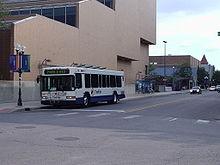
The Ann Arbor Transportation Authority (AATA), which brands itself as "The Ride", operates public bus services throughout Ann Arbor and nearby Ypsilanti. AATA has recently introduced hybrid electric buses to its fleet of 69 and is the first public transit operator in the Midwest to state its intention to convert to all hybrid electric buses.[137] A separate zero-fare bus service operates within and between the University of Michigan campuses,[138] and the AATA ran a free Link Bus connecting central campus and downtown during the U-M school year until 20 August 2009.[139][140][141]
A downtown bus depot served by Greyhound Lines provides out-of-town bus service, and is the city's only remaining example of the Streamline Moderne architectural style.[142] Megabus has twice daily direct service to Chicago, Illinois, while a bus service provided by Amtrak connects to East Lansing and Toledo, Ohio, though only for rail passengers making connections. The Michigan Flyer, a service operated by Indian Trails, offers bus service to Detroit Metro Airport, Jackson, and East Lansing.[143]
Special bus shuttle service to Detroit Metropolitan Wayne County Airport[144] is available for a low fare before and after university breaks. Another service, Michigan Flyer,[145] offers twelve round trips daily.[146]
Ann Arbor Municipal Airport is a small, city run general aviation airport located south of I-94. Detroit Metropolitan Airport, the area's large international airport, is about 25 miles (40 km) east of the city, in Romulus.[147] Willow Run Airport east of the city near Ypsilanti serves freight, corporate, and general aviation clients.[148]
The city was a major rail hub, notably for freight traffic between Toledo and ports north of Chicago, Illinois, from 1878 to 1982; however, the Ann Arbor Railroad also sold 1.1 million passenger tickets in 1913.[149] The city was also served by the Michigan Central Railroad starting in 1837. Ann Arbor and Ypsilanti Street Railway, Michigan's first interurban, served the city from 1891 to 1929.[150]
Amtrak provides service to Ann Arbor, operating its Wolverine three times daily in each direction between Chicago and Pontiac, via Detroit. Rail service is provided at the Ann Arbor Train Station; the present-day station neighbors the city's old Michigan Central Depot, which was renovated as a restaurant in 1970.[151]
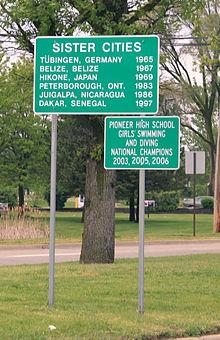
Ann Arbor has seven sister cities:[152][153]
Word Count: 6508






